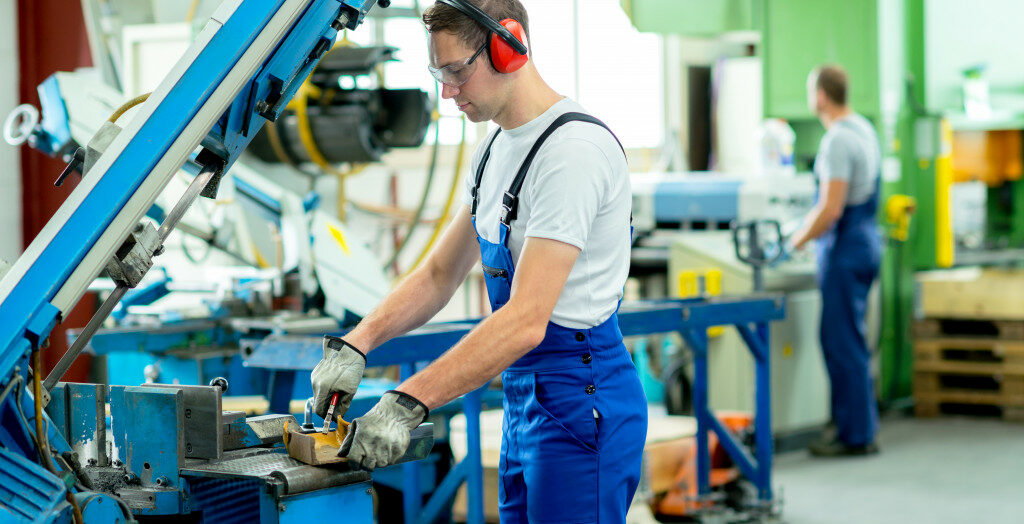The Manufacturing industry has always been at the forefront of innovation. From the Industrial Revolution to the assembly line, factories have constantly been adapting and evolving to keep up with changing times. And thanks to recent technological advances, the Manufacturing industry is now more innovative than ever.
The United States has long been a global leader in manufacturing. The sector continues to have a big impact on the country’s economy. According to official statistics, manufacturing contributed $2269.2 billion to US GDP in 2020, accounting for 10.8% of total GDP. Manufacturing contributed an estimated 24 percent of GDP (direct and indirect value added).
Technological advancements have also played a vital role in the sector’s success. These technologies are making factories more efficient and productive than ever before. Here are five technology innovations that are changing the way things are made and could have a significant impact on the future of manufacturing:
Collaborative Robots
Commonly referred to as ‘cobots,’ collaborative robots are designed to work alongside humans in manufacturing environments. These robots are typically used for tasks that are too difficult or dangerous for humans, such as lifting heavy objects or working in hazardous conditions.
Collaborative Robots (cobots) are becoming increasingly popular in manufacturing settings because they can help boost productivity and efficiency.
For example, a collaborative robot can be used to lift and move heavy objects, freeing up human workers to focus on other tasks. This can also be used in agriculture for picking fruit or logistics for handling packages.
Typically, collaborative robots are much smaller and lighter than traditional industrial robots. This makes them easier to work with and less likely to cause injuries if they come into contact with humans. The return of investments for collaborative robots is also relatively short, with most cobots paying for themselves within two years.
Nanotechnology
This technology can create materials with unique properties not found in nature. It is being used in a variety of industries, including manufacturing. Nanotechnology is already being used to develop more robust and lighter materials for products such as airplanes and automobiles. For example, Boeing uses nanotechnology to create stronger and lighter composite materials for its new 787 Dreamliner.
This technology can also create self-cleaning surfaces and coatings for metals. This technology is also used to develop more efficient solar cells and batteries. In the future, nanotechnology could be used to create new materials with unique properties that we have not even imagined yet.
Big Data
Big data is a term used to describe the large volume of data organizations now have access to. This data can come from various sources, including social media, internet-connected devices, and sensor data. In manufacturing, big data can be used to improve production processes. For example, by analyzing data from sensors, manufacturers can identify problems with machinery and make the necessary repairs.

Big data can also be used to optimize production schedules. By analyzing data on customer demand, manufacturers can adjust their production schedules to ensure they can always meet customer needs. In the future, big data will become even more critical as factories become more automated, which will help them make better decisions about how to run their factories.
Internet of Things (IoT)
The Internet of Things (IoT) is a network of physical devices, vehicles, and buildings connected to the internet. These devices collect and share data about themselves and their surroundings. In manufacturing, the IoT can connect machines and equipment to the internet. This allows for real-time monitoring of production processes.
The IoT can also track inventory levels and detect when supplies are running low. This information can trigger automated ordering processes, ensuring the necessary supplies are always on hand. By connecting all the machines in a factory to the internet, manufacturers can monitor and control production processes from a central location.
Augmented Reality
Augmented reality (AR) is a technology that overlays digital information in the real world. In manufacturing, AR can provide workers with real-time information about their surroundings. For example, AR can display assembly instructions on a worker’s goggles. This can help to reduce errors and increase efficiency.
Factory workers can now use their smartphones or tablets for a more informative experience while on the job. With AR, employees can view products’ specifications and other information about them without having to leave their jobs – which is helpful for checking up on quality control or making sure parts are installed correctly onto machines.
AR can also be used to provide training for workers. By overlaying digital information in the real world, workers can learn how to use new equipment without going through a traditional training program. For example, GE Aviation has developed an AR training program for workers who maintain jet engines.
All in All
The industrial sector is always on the lookout for new technologies that can help improve production. There have been several significant technological advances in the manufacturing industry in recent years.
These technologies can potentially make factories more efficient and productive in the coming years. Suppose you are looking for a way to stay ahead of the curve. In that case, keeping an eye on these cutting-edge technologies and how they could impact your business is essential.






